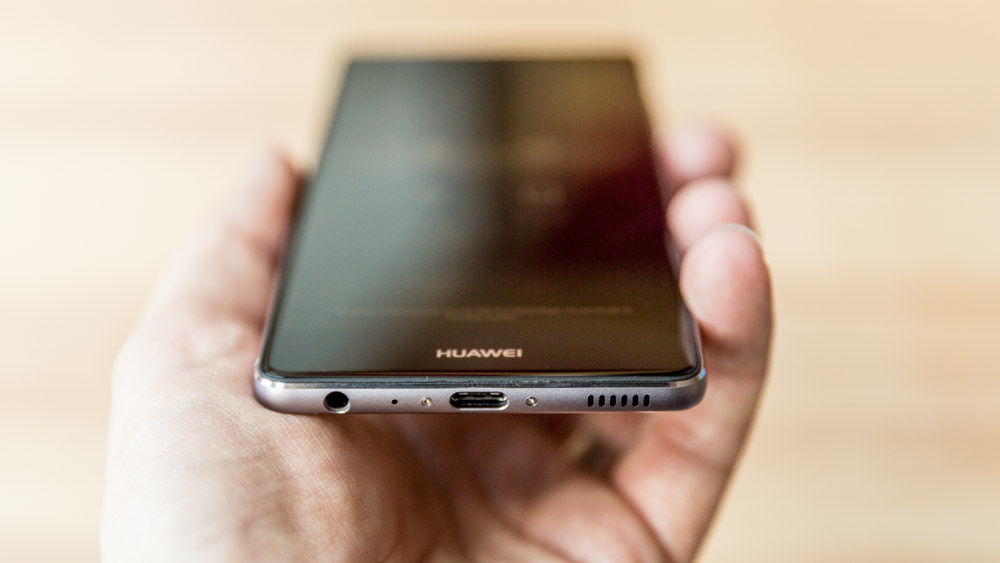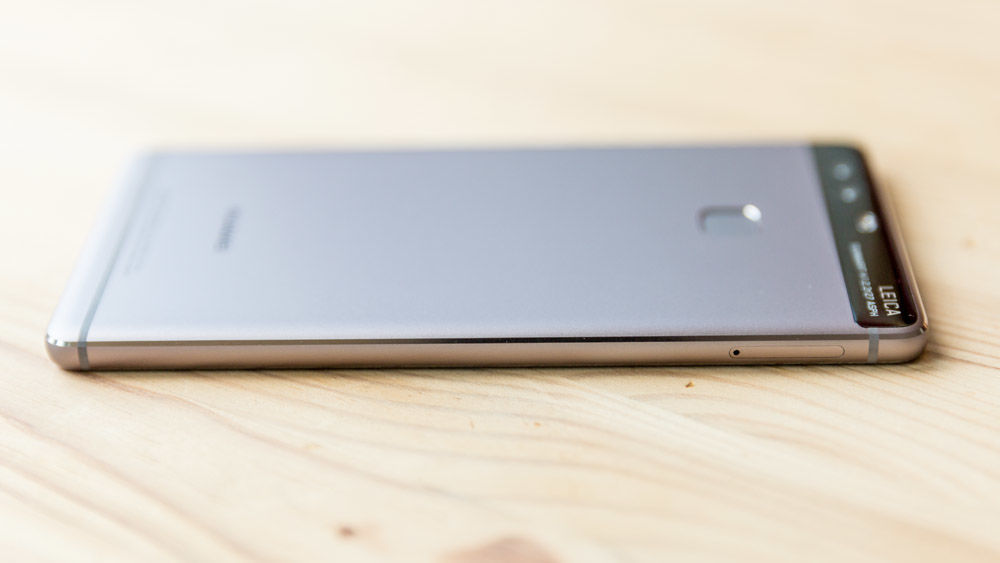Also see: Huawei P9 and P9 Plus launch as it happened, Huawei P9 Plus review.
Huawei P9 & P9 Plus UK release date: When is the Huawei P9 coming out?
According to Huawei the P9 will be available on 16 April in Austria, Bahrain, Belgium, China, Czech Republic, Egypt, Denmark, Finland, France, Germany, Greece, Hungary, Ireland, Italy, Jordan, Lebanon, Kuwait, Netherlands, Norway, Oman, Poland, Portugal, Qatar, Saudi Arabia, Spain, Sweden, Switzerland, United Arab Emirates and the UK. Note, however, that the Rose Gold model will not launch in Europe. The P9 Plus will be available in Europe and Asia on 20 May. Huawei has no plans to release the smartphones in the US. There are slightly different versions of the phones for Europe and Asia, with the Asian models featuring dual-SIM capability. The European variants are single-SIM handsets. (But we’ll take that with a generous pinch of salt, given that its UK release date claims for the Huawei P8 and P8 Max turned out to be way off the mark. You can read our Huawei P8 review here to see what’s changed.)
Huawei P9 & P9 Plus UK price: Where to buy Huawei P9 – best Huawei P9 deals, How to preorder Huawei P9
The Huawei P9 costs 599 Euros for the 3GB RAM, 32GB storage model, and 649 Euros for the 4GB RAM, 64GB storage model. That converts to £483/£524 in the UK. The Huawei P9 Plus costs 749 Euros, which converts to £604. Vodafone is already accepting pre-orders on the Huawei P9 in grey, and will take pre-orders on the silver option from 11 April. Those who preorder from Vodafone will get a free Huawei W2 watch. Vodafone says customers can pre-order the Huawei P9 on a Vodafone Red 2GB Bundle for £30 per month, which includes unlimited texts, unlimited minutes and 2GB of data. Alternatively, they can opt to pre-order the Huawei P9 on a Vodafone Red Value 4GB Bundle for £35 per month, which includes unlimited texts, unlimited minutes and 4GB of data, as well as a choice of six months free access to Sky Sports Mobile TV, Spotify Premium or a NOW TV Entertainment Pass. EE has already been in touch to confirm it will stock the Huawei P9 in Titanium Grey in the UK, but it hasn’t mentioned the P9 Plus. O2, meanwhile, will stock both the P9 and P9 Plus, and Three has confirmed via Twitter that it will stock the P9. Having seen Carphone Warehouse at the launch event it’s more than likely it will also stock the P9. Read next: 20 best smartphones of 2016.
Huawei P9 & P9 Plus new features: What to expect from the Huawei P9 & P9 Plus
The Huawei P9 and P9 Plus are exactly what we expect from Huawei: gorgeous curved-edge aluminium unibody smartphones with excellent build quality, specifications, and what should be a significantly lower price tag than most flagships sold in the UK (we’ll confirm pricing later). Both run Android Marshmallow 6.0.1 and are available in a variety of sandblasted finishes. The P9 comes in Titanium Grey, Mystic Silver, Prestige Gold, Haze Gold, Rose Gold and Ceramic White, while the P9 Plus is available in Ceramic White, Rose Gold, Haze Gold and Quartz Grey. As was rumoured the standard Huawei P9 has a 5.2in display – but it’s not Quad-HD. Both phones have full-HD panels, with the P9 Plus’ unsurprisingly larger at 5.5in. That means the P9 has a pixel density of 423ppi (P9 Plus is 401ppi), while its screen bezels are incredibly thin and, at just 1.7mm, barely visible. The standard P9 has an IPS display, known for its realistic colours and excellent viewing angles and, according to Huawei, it’s one of the best in terms of colour saturation and very bright (96 percent colour saturation and 500 nits brightness). The P9 Plus features a Super AMOLED panel, as seen on Samsung phones, which features very rich, saturated colours (108 percent colour saturation and 1:1.18M contrast). The Plus also boasts Press Touch, which is Huawei’s version of Force Touch. As you’d expect, given its larger screen, the 152.2×75.31×6.98mm Huawei P9 Plus is the larger of these two devices. The smaller P9 is just 6.95mm thick – thinner than the iPhone 6s and Samsung Galaxy S7 – but packs in a 3,000mAh battery. With its extra room inside the case the P9 Plus is able to carry a higher-capacity 3,400mAh battery. Huawei says the P9 should last a day and a half, and the P9 Plus around two days. Inside is Huawei’s own octa-core (4x 2.5GHz, 4x 1.8GHz, i5 co-processor) Kirin 955 processor, which is paired with 3GB of RAM and 32GB of storage for the Huawei P9, and 4GB of RAM and 64GB of storage for the P9 Plus. A 128GB model of the P9 Plus will also be available in Asia, but is not coming to Europe. As we mentioned, only the Asian version of these phones features dual-SIM capability, but with the European version you do at least get microSD support up to 128GB. The other key change in connectivity for both phones is a USB-C port for data transfer and charging (fast charging is supported only by the P9 Plus). The P9 Plus boasts an IR blaster and stereo speakers, too. Also see: Best new phones coming in 2016.
The biggest changes in the Huawei P9 and P9 Plus over their predecessors, though, are found on the rear. Not only do both phones feature the same insanely accurate fingerprint scanner as the Mate 8, but they feature a new dual-lens camera: the Leica Summarit H 1:2.2/27 ASPH. Huawei has produced this new twin-12Mp camera in collaboration with Leica. The P9 and P9 Plus feature Leica-certified lenses and a reworked interface that allows you to operate the camera and adjust such things as resolution and effects using only swipes. This has, according to Huawei, allowed it to “improve and bring smartphone photography to new levels”. Unlike other dual-camera phones, one of these sensors is a standard RGB sensor, and the other monochrome. This allows the Huawei P9 and P9 Plus to produce awesome black-and-white images, with 200 percent more light info and 50 percent more contrast. Also see: Best Android phones 2016. The new dual-camera doesn’t feature image stabilisation – Huawei says it’s fast enough not to need this, and its burst mode can capture 16 pictures in a single second – but it does boast dual-LED flashes, 1.25um pixels, a hybrid autofocus (laser, depth and contrast focus), and a plethora of new camera modes, some of which we’ll detail below. A Film mode setting can change the colour and brightness of pictures: Vivid mode is good for landscapes and pictures of food, and Smooth mode is ideal for portraits. Other camera modes include: Monochrome mode, which switches to the B&W sensor for pure, crisp black-and-white photos; Wide aperture mode, which is typical of Leica cameras, and allows you to adjust the aperture and focal point after an image has been captured, focusing on the foreground and blurring out the background for amazing portraits – you can add effects, too; and there is a range of manual settings such as ISO, white balance and shutter speed that can be adjusted in Pro mode. One of our favourite features about the Huawei P9 and P9 Plus camera, though, is the fact it’s this good and there’s no camera bump. It’s the little things…
Huawei P9 & P9 Plus specifications
64GB ROM, 4GB RAM
Huawei P9 in pictures
Huawei P9 Plus in pictures
See a full recount of Huawei’s P9 and P9 Plus London launch event in our blog below, and stay tuned a little later today for our hands-on Huawei P9 and P9 Plus reviews. Marie is Editor in Chief of Tech Advisor and Macworld. A Journalism graduate from the London College of Printing, she’s worked in tech media for more than 17 years, managing our English language, French and Spanish consumer editorial teams and leading on content strategy through Foundry’s transition from print, to digital, to online - and beyond.














